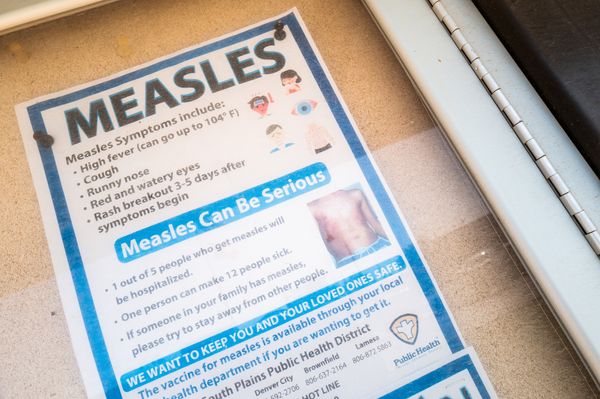
You've no doubt come across RACEWKND, the art-book-slash-magazine where each issue carries a satisfying heft and a specific theme: say, the Miami GP's inaugural race or F1 in the 1970's. Now, the team behind those all-too-periodic periodicals is back with something new and, thankfully, more regular: a quarterly magazine called RQ1.
"Each issue of RACEWKND is a deep dive into a single topic, so it actually takes a long time to pull together, leading to a slow publishing schedule," explains RACEWKND founder and publisher Magnus Greaves. "RQ1 allows us to cover all of the topics related to F1 culture, design and fashion… across every decade from the 1970s to today. Also, we’ve been tracking the building interest in F1 and fashion for some time, and wanted to dive into it with original fashion shoots and other features."
RQ1's launch issue feels like a stroll through the F1 museum of your dreams, thanks to page after page of beautifully photographed pieces from the sport's history. The rarest artifacts — a race-worn Senna suit, James Hunt's gloves, an actual Hesketh car — are owned by renowned Spanish motorsports photographer Miquel Liso. Others, like the vintage Tommy Hilfiger Ferrari jacket, have been found by RQ1's team, and will be available via auction on the magazine's site shortly.
If you want to get the full effect, including a profile of Liso and his enviable collection of memorabilia, you can subscribe. In the meantime, try not to be too jealous of Liso when you see the images below, shot by photographer Santiago Garcés for RQ1's first issue (descriptions by Elizabeth Blackstock).
Ayrton Senna's Lotus-Honda race suit

The suit was worn by the Brazilian legend en route to his first F1 win at Monaco, in 1987. Senna, piloting the Lotus 98T car, capitalized on pole-sitter Nigel Mansell dropping out with a broken turbo.
George Harrison "Faster" picture disc single (1979)

There's no shortage of music centering around the adrenaline-fueled world of Formula 1, but one of the very first was George Harrison's “Faster.” A former Beatle, Harrison took a year off from music to follow the F1 circuit in the late 1970s and returned to pen a slew of racing-related songs. “Faster,” released in 1979, was inspired by the miraculous 1976 racing comeback of the fire-scarred Niki Lauda. Sales of the single raised funds for cancer research set up by F1 driver Gunnar Nilsson, and commemorated the late Ronnie Peterson.
Keith Harring-designed business card (1988)

Falling somewhere between graffiti artist and classical master, Keith Haring made waves in the Formula 1 world with his design for F1 driver Stefan Johansson's business card. The simple, almost
cartoonish, image depicts the ultimate hybrid of man and machine: A man running with a race car for a head. Himself an artist, Johansson's collaboration with Haring is a deeply authentic representation of what it means to be a racer.
Tommy Hilfiger Ferrari suit

Mercedes has become synonymous with Tommy Hilfiger — but the iconic American designer was one of the first non-automotive brands to sponsor a Formula 1 team when it forged partnerships with Lotus, then Ferrari. Legends of the Scuderia like Michael Schumacher, Mika Salo, and Eddie Irvine donned Hilfiger team kits that integrated the team's other sponsors (Marlboro, Shell) and bridged the gap
between motorsport and high fashion for the first time.
James Hunt toy & monogrammed personal jacket (1973-79)

Even today, one utterance of his name carries with it the devil-may-carry attitude that earned this Formula 1 driver the nickname “Hunt the Shunt.” Beginning his career with the backmarker Hesketh Racing, Hunt easily outperformed the machinery available to him — and when a seat opened up at McLaren, he made the right fit. His highly contentious 1976 World Championship saw him spar with Ferrari's Niki Lauda all the way to the season finale, earning the Briton a crown of sporting legitimacy to wear alongside his flamboyant outfits and party-hard personality.

Heuer Silverstone watch + James Hunt's gloves

Chronographs and timepieces have long graced the pit stalls of many tracks since the earliest days of racing. The delicate mechanisms and second hands were watched fervently to record accurate lap times, some that would etch names as greats into the annals of motorsport. So, it’s only natural that the drivers who push the limits of some of the most complex of machines would don a similarly engineered piece of machinery, albeit smaller, on their wrists.
The two have remained so interlaced that Heuer’s became one of the first non-car manufacturer logos to grace a Formula 1 car in 1968. Just three years later, they partnered with Ferrari as TAG Heuer, and the brand continues to foster relationships through series’ paddocks, and drivers as well — including Ayrton Senna, who remains a partner, posthumously. Heuer Silverstone ref. 110.313 from 1971 provided by Ancienne Watches.
Ligier ash tray (1993)

Automotive brands have embraced the art car for decades, but no Formula 1 team has
created a livery quite as stunning as that introduced by Ligier on its JS39. For the final three races of 1993, the French team ditched its Gitanes sponsorship for a beautiful collaboration with Italian comic book creator Hugo Pratt. Artful blues, whites, and blacks adorned the Ligier's bodywork, providing a striking visual for anyone tuning in.
Hesketh 308 car (1974)

Champagne, lobster tails, and five star hotels: Formula 1's luxurious lifestyle was founded by Hesketh Racing in the mid-1970s. The rebellious Lord Alexander Hesketh fell head over heels for Formula 1, and he made waves by founding his own flamboyant team without any need for sponsorship (unless a few "SEX: Breakfast of Champions" patches count). Notorious playboy James Hunt competed for the team between 1973 and 1975, giving the team its first win — and cementing Hesketh Racing's status as a swashbuckling trailblazer in Grand Prix racing.
Update: Ayrton Senna’s race suit was mistakenly listed as being from his first-ever win. We regret the error.







